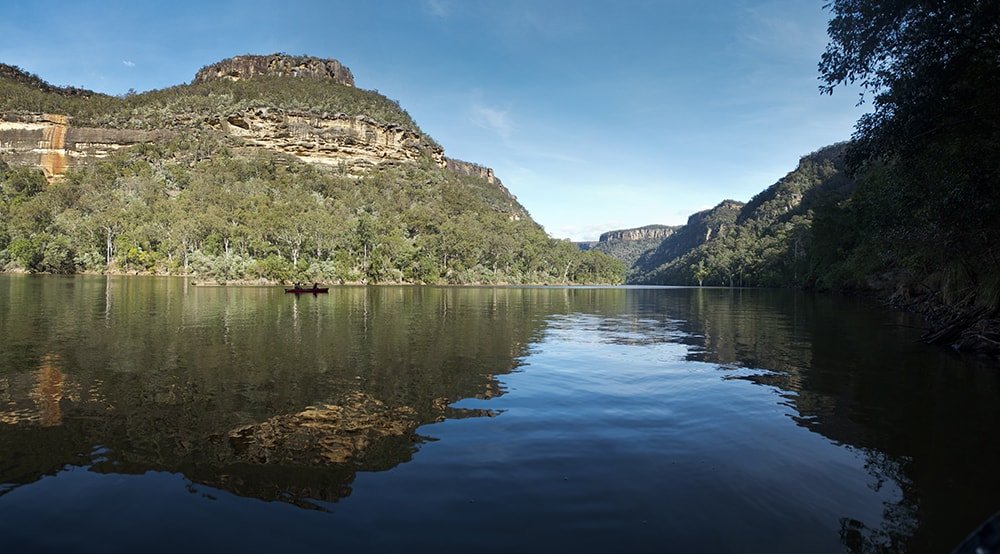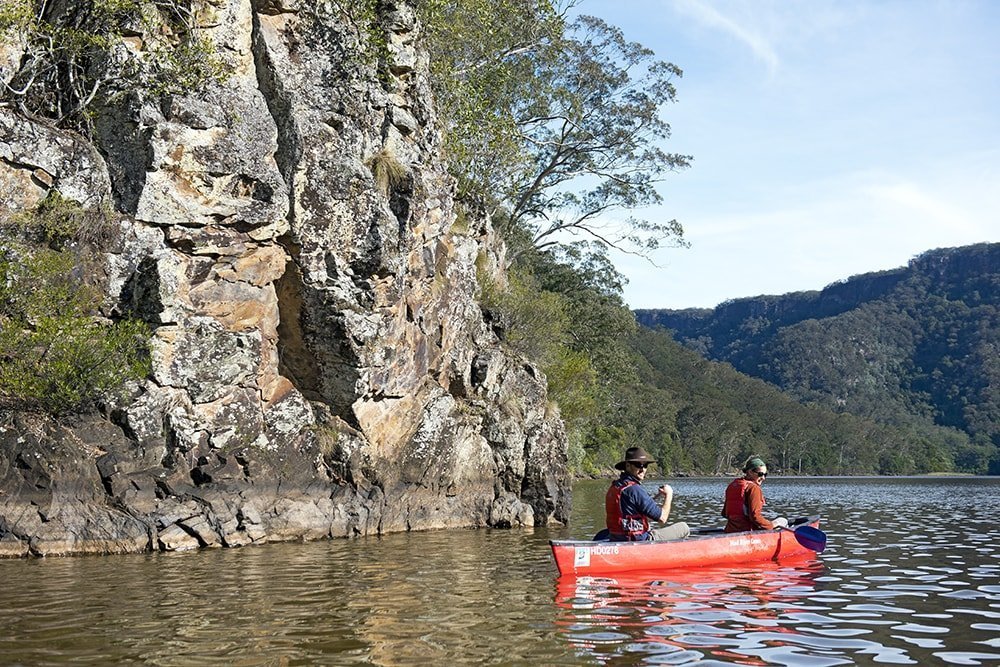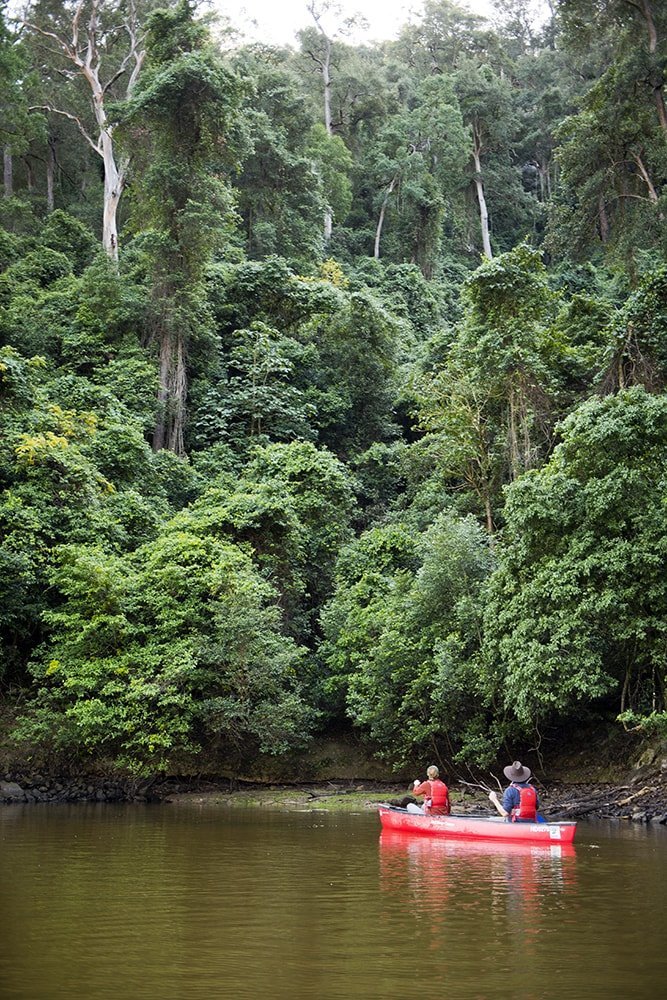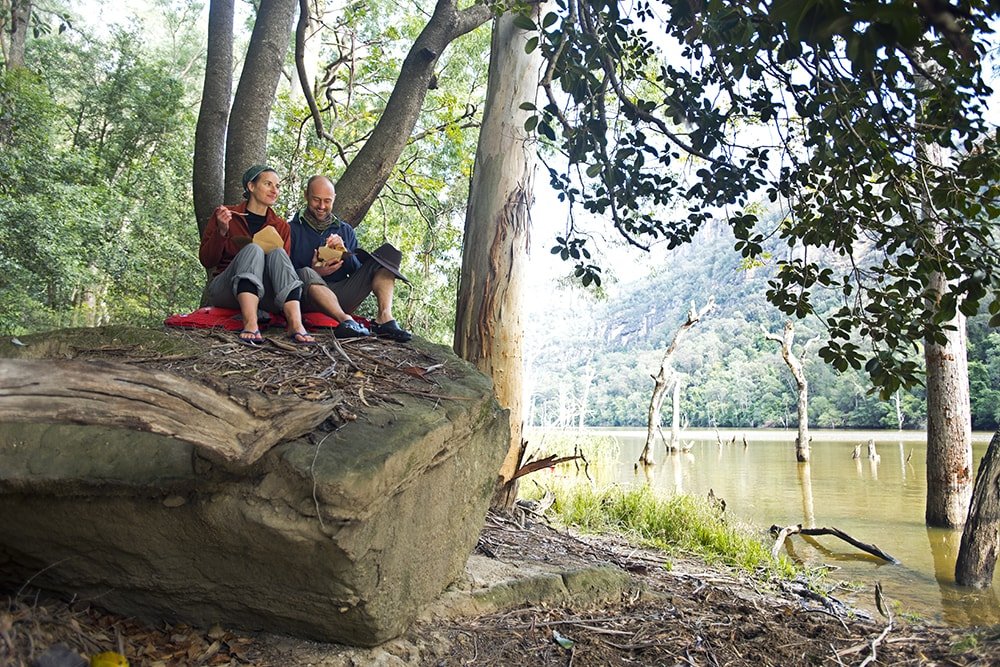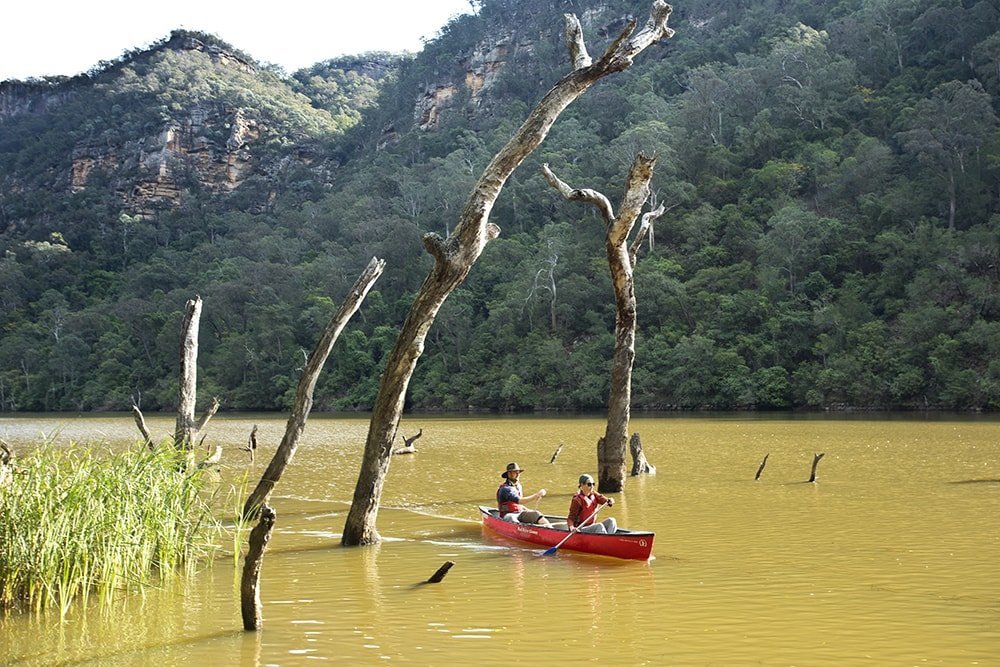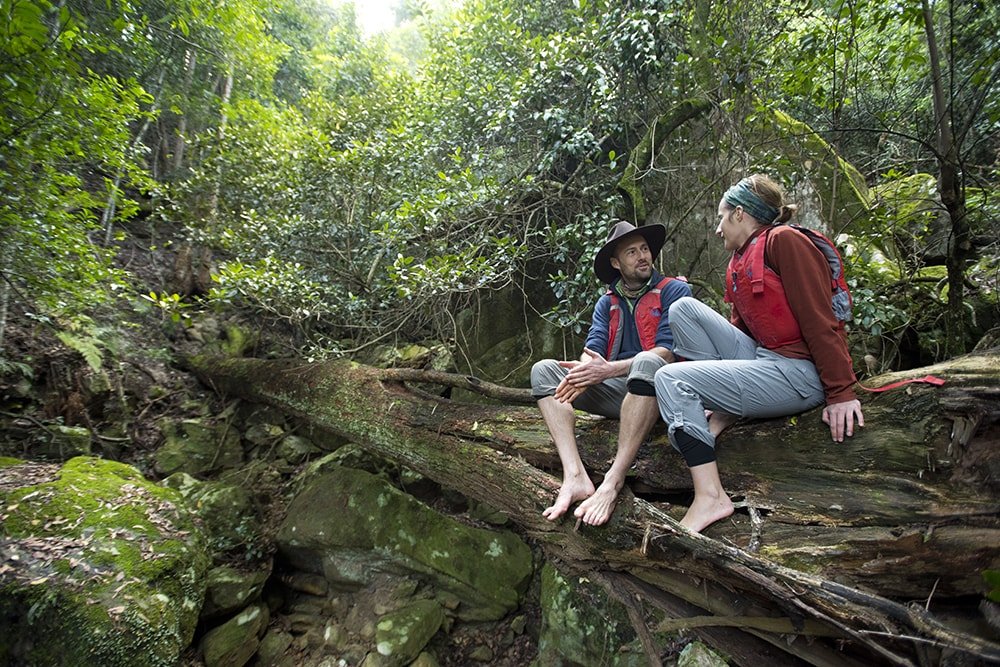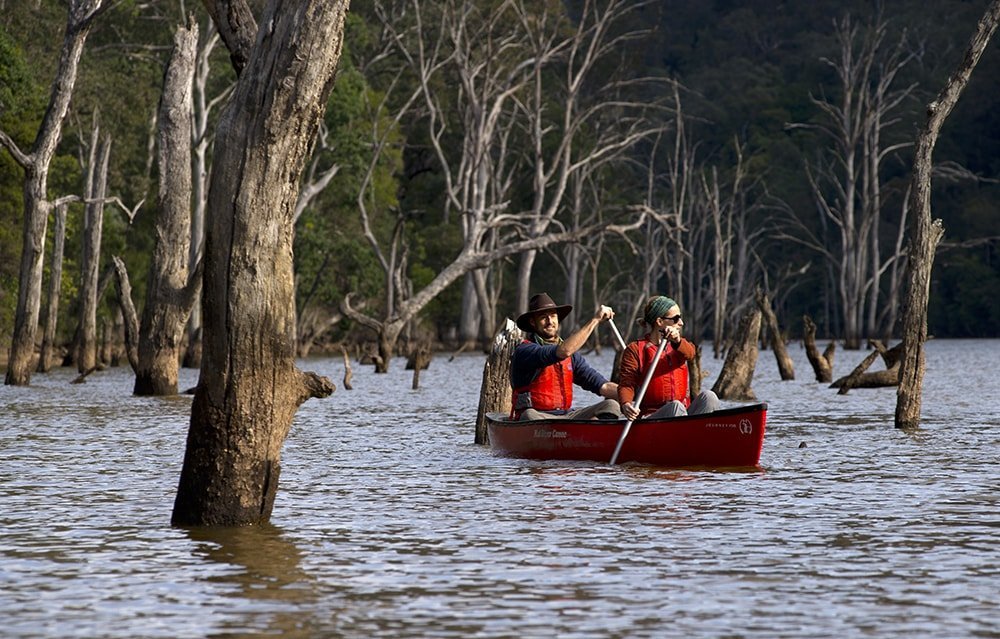Going wild: Kangaroo Valley

BEHIND US VEGETATION spills from shady pockets of remnant rainforest into the water. I dip a paddle and watch the whirlpools spin away from it, as the double canoe I’m sharing with my husband glides atop the water’s surface.
It’s a late morning in June and the water body we’re exploring is Lake Yarrunga, at Kangaroo Valley in the Shoalhaven region of New South Wales. This human-made lake was formed where the Kangaroo and Shoalhaven rivers merge, when Tallowa Dam was completed in 1976 as part of the water supply and hydroelectric power generation Shoalhaven Scheme. Beyond its banks are the sprawling wilderness of Morton National Park and the rolling green hills of Kangaroo Valley. Upstream is the charming Kangaroo Valley village, where the waters of the Kangaroo River pass beneath the iconic sandstone of Hampden Bridge, which was built in the late 1890s.
In 1812, when British surveyor George Evans stood atop Cambewarra Mountain while exploring north of Jervis Bay, he’s said to have seen a view “no painter could beautify”. It was the first recorded European sighting of Kangaroo Valley, an area that had been occupied for millennia by the Wodi Wodi people, the traditional owners of this part of the Illawarra coast.
WE HIRED OUR CANOE from local operators Glyn and Jenny Stones of Kangaroo Valley Safaris, who have been facilitating the discovery by water of this part of the world since 1993. They used to visit Kangaroo Valley on horseriding holidays with their kids, during which they’d occasionally rent kayaks from the local caravan park – revealing a business opportunity that would eventually become their livelihood and a local institution. Eventually the Stones’ weekender house turned into their full-time home, and six canoes and largely word-of-mouth advertising turned into more than 180 craft and a thriving tourism operation.
As we made our way upstream towards Shoalhaven Gorge, we first paddled past the buoys separating us from the dam spillway before being confronted by eerily beautiful evidence of the area’s relatively recent human influence. Before us, a dispersed stand of silvered eucalypts reached their bare branches out of the water, where they had drowned when the river was dammed more than 40 years ago.
Further upstream at Yarrunga Creek – a tributary of the Kangaroo River – is a similar but even more impressive tree graveyard that locals call the Sunken Forest. As we weaved our canoe between the gnarly trunks it occurred to me that, in a few more decades, they will join the rest of the vegetation in the cold depths below – so that future paddlers will only know of this fascinating spot through memories or stories.
We were only two hours drive from Sydney, two and a half from Canberra, the skies were clear and it was a Saturday – and yet we had the water to ourselves. Before launching, Glyn had assured us that the river is always bustling with activity in the summer months. I was happy for the solitude, with only the sound of the wind whooshing down adjacent gullies, our paddles hitting the water and birdsong as company. (A ban on powerboats in Lake Yarrunga helps.) If the shorter days and lower temperatures of winter are the price to pay for that solitude, then it’s a bargain.
Glyn’s favourite time to paddle is during the cooler months, although he enjoys the waterways year-round. He’s had amazing wildlife encounters over the years. On one morning paddle, he watched a white-bellied sea-eagle circling above a group of ducks before nosediving them. “I was sure it was going to take out a duck, but it dived between them and came out with a fish,” he recalls. Another time, he was surprised to see a wombat swimming across the water.
Every season offers its perks. Swimming in these waters is popular in summer, when majestic waterfalls spill over the towering sandstone cliffs after rain. In spring, Glyn adds, the flowering wattle along the banks is a sight to behold.
To experience this bush at its best, an overnight paddling expedition is your best option. There are more than a dozen informal camping spots to choose from, especially further up Shoalhaven Gorge, where the water returns to its wild river state.
Alas, due to logistics, we weren’t camping on this trip. Instead, our evening’s digs were back in a lofty country house in Kangaroo Valley itself. Locally produced food and wine are selling points in the restaurants and cafes that line the village’s main street, which is famous for its colonial architecture and historic charm. Deli and dining school, Hampden Deli Dining, had supplied our packed lunch for the day on the water, and dinner was a regionally inspired menu at Bistro One46.
EARLY THE NEXT MORNING, we were back on the water again – this time switching our double canoe for individual kayaks. We launched upstream of Lake Yarrunga, at Bendeela Camping and Picnic Area, on the Kangaroo River. (When the waters are high enough, a paddle starting from Hampden Bridge in Kangaroo Valley offers seven small rapids to negotiate before reaching the calmer waters here.)
We also weren’t quite as alone on this occasion, as we passed a group of young men in two double canoes loaded with camping gear for the night ahead, and later what looked like a school group accompanied by a smiling, if somewhat harried, teacher. It didn’t take long, though, for us all to disperse. Soon our only company was the occasional solid, rotund figure of a wombat ambling along the banks and – at one point – a tiny azure kingfisher darting among low-hanging branches.
Had we not briefly passed these groups, in light of the solitude, it would have been easy to fool ourselves that we were more remote. I was reminded that this environment isn’t all that far from some of the country’s biggest population centres.
This is where the area’s real strength becomes apparent, in its delicate balance between nature and amenity that allows people to enjoy the area without a high level of commitment. Experiences like this encourage us to appreciate the natural world and remind us of its value.
As we dragged our heavy kayaks up the bank at the end of the long day’s paddle, stretched out our backs and attempted to rediscover our land legs, my husband joked that maybe we should just hop back in the kayaks and keep paddling. With creeping unspoken thoughts of the work week ahead, I realised he was only half joking.
For more information visit www.shoalhaven.com
